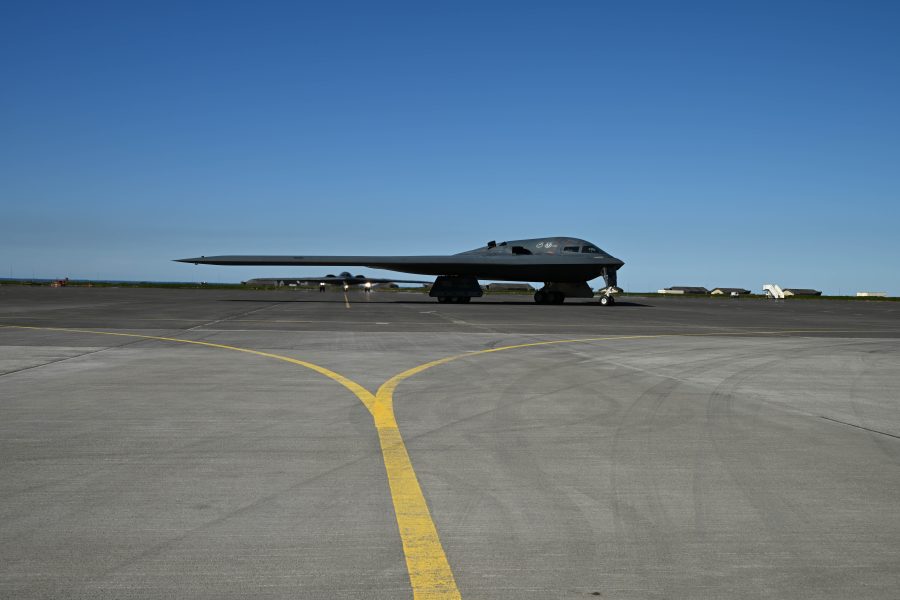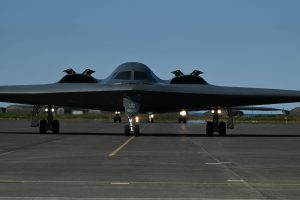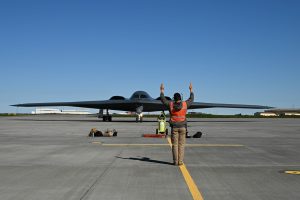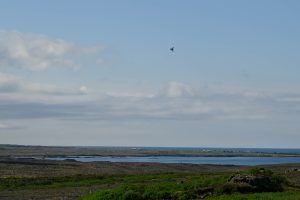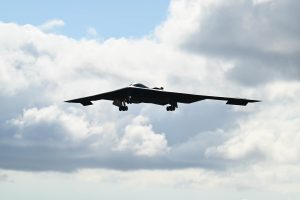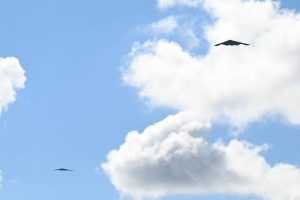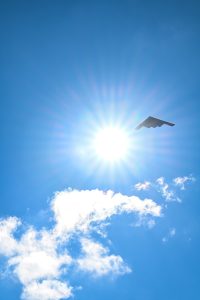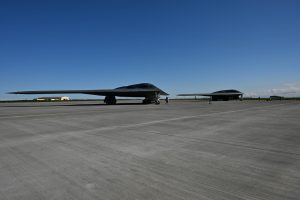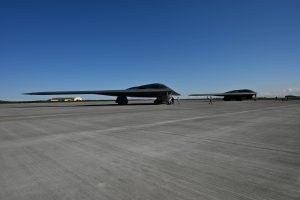Three B-2 bombers from the 509th Bomb Wing at Whiteman Air Force Base, Mo., landed in Keflavik, Iceland, on Aug. 13 to begin a Bomber Task Force deployment, the service announced. The deployment marks the first overseas appearance of the stealth bomber since the B-2 fleet’s six-month safety pause ended this May.
The planned duration of the deployment was not disclosed, but BTFs typically last 2-6 weeks. More than 150 support Airmen and aircrew deployed alongside the bombers and will exercise with NATO and U.S. Air Forces in Europe (USAFE) units in the region.
The B-2 is the Air Force’s sole operational stealth bomber, with a globe-girdling range, and the ongoing Bomber Task Force rotations in Europe are seen as one element of NATO’s heightened level of alert since Russia’s invasion of Ukraine in early 2022.
The Spirit’s return to Europe comes after it spent the first part of 2023 on the ground—the fleet stopped flying after one aircraft was damaged following an emergency landing at Whiteman, but the Air Force has not given the root cause of that accident nor explained why the “safety pause” in operations was necessary.
This is not the first B-2 deployment to Keflavik. Three B-2s, with more than 200 support personnel, operated from the Icelandic base in September 2021 for nearly three weeks. At the time, Air Force officials said establishing Keflavik as a location from which B-2s could operate added “another strategic stepping stone” for U.S. bombers to the European theater. During that deployment, the bombers practiced suppression of enemy air defenses and the employment of standoff missiles along with aircraft from other NATO countries.
The most recent Bomber Task Force rotation to Europe was a contingent of B-1B bombers from the 7th Bomb Wing of Dyess Air Force Base, Texas, which operated from RAF Fairford, U.K., from late May until late June. During the monthlong visit, the B-1s participated in four U.S. and international exercises, including two Arctic drills; made an appearance at the Paris Air Show; and landed in Sweden, which is in the process of joining NATO, for the first time.
Global Strike Command also continues to conduct BTFs in the Pacific, having deployed B-52 contingents to Andersen Air Force Base, Guam, in June and July and a package of B-1s to Misawa Air Base, Japan, in July.
The reduced number of Airmen and support personnel accompanying the B-2s to Iceland during this deployment may be a demonstration of the Air Force’s ongoing effort to reduce its footprint when positioning forces away from home base. Under the Agile Combat Employment model, USAF is striving to make deployments with as few personnel as possible, often to austere or remote airfields, to practice moving quickly and complicating an adversary’s targeting.
Imagery of the B-2s arriving at Keflavik, released by the Pentagon, also showed two C-5Ms of the 433rd Air Wing, which presumably brought their support gear and personnel.
“Each bomber task force mission underscores the prowess of our armed forces in navigating today’s intricate and unpredictable global security terrain, with a focus on fostering stability, security, and freedom across Europe,” said Gen. James Hecker, commander of USAFE.
The Iceland BTF is led by Lt. Col. Andrew Kousgaard, commander of 393rd Bomb Squadron. He said BTFs demonstrate the Air Force’s strategy of strategic unpredictability with operational adaptability.
“The B-2 bomber is arguably the most strategically significant airplane in the world, but that doesn’t mean it’s inflexible; dynamically deploying the bombers forward is a unique and important capability,” Kousgaard said.
He added that there is “simply no substitute for the hands-on integration” with U.S. allies and partners in the region. The deployments help familiarize USAF, Joint and allied forces in the region with the capabilities of U.S. bombers, he said.
It was not disclosed whether the B-2s will operate from any forward areas in Europe, but BTFs often include unannounced secondary deployments.
Iceland is a member of NATO but has no military forces and has over the past six decades allowed NATO units to operate from its airfields. The U.S. Air Force maintained an interceptor capability at Keflvik until the early 2000s. Subsequently the base has been reactivated for exercises and NATO air policing missions. B-2s had transited through Keflavik before but never used it as an operating location until 2021.
